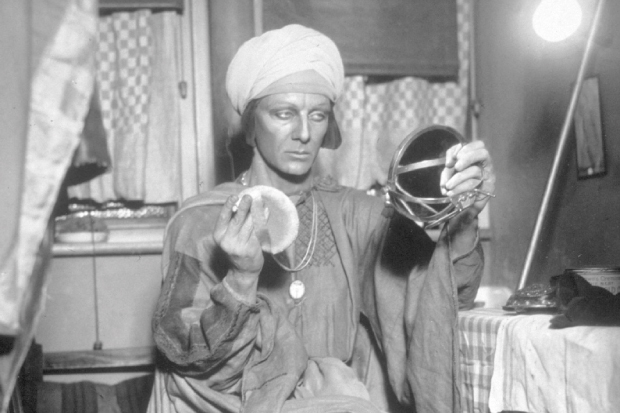The moment Waterloo Bridge was planned across the Thames, a new theatre to serve the transpontine coach trade was inevitable. The Old Vic opened in 1818. Originally called the Royal Coburg, it could seat a whopping 3,800. Kean was the first great actor to perform there. In 1831 he played Richard III, King Lear and Othello in one week. After giving his Moor, he came on, still blacked up and doubtless drunk, and let the heckling swine have it: ‘I have never acted to such a set of ignorant, unmitigated brutes as I see before me.’ Theatre back then sounds such fun.
The amazing thing about the Old Vic is that it never burned down like all other theatres of its vintage; instead, its story is one of constant financial disaster. Its history features two penny-pinching, remarkable women, neither of whom liked theatre very much. Emma Cons was a well-connected do-gooder but she was passionate about temperance, not theatre. Not once in her 32-year reign did she put on a play.
Her niece, Lilian Baylis, took over in 1912. It was the eccentric, pious Miss Baylis, frying sausages in the wings and using one of the curtained-off boxes as her office, who made the place famous. Her first love was always the opera. Under her regime, however, the Old Vic acquired Shakespeare as its house dramatist. All the plays of the First Folio were staged, and John Gielgud gave his mellifluous Hamlet. ‘Sorry, dear, God says no’ was Baylis’s response to any actor’s request for a pay rise. A populist visionary, she must have seemed to many a stingy old rat-bag.
When Olivier arrived from Hollywood it was a major coup for the Vic.








Comments
Join the debate for just £1 a month
Be part of the conversation with other Spectator readers by getting your first three months for £3.
UNLOCK ACCESS Just £1 a monthAlready a subscriber? Log in